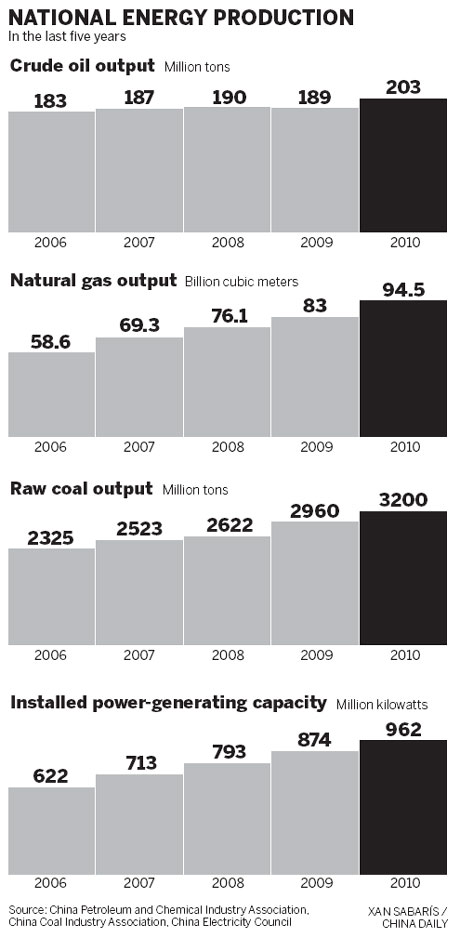China approves 10 more nuclear power generators
BEIJING - China is expected to raise its 2020 target for the nuclear power industry to 86 gigawatts (gW), or 5 percent of its power generation, representing at least 70 billion yuan ($10.6 billion) of investment annually.
The nation will approve another 10 nuclear power projects during the 12th Five-Year Plan (2011-2015), according to Zhang Guobao, former director of the National Energy Administration.
In line with the country's move to accelerate the development of the industry, China National Nuclear Corp (CNNC), the country's largest nuclear power company, plans to invest 800 billion yuan ($121.5 billion) in nuclear projects by 2020.
CNNC said the total investment in nuclear power plants is expected to reach 500 billion yuan by 2015, resulting in 40 gW of nuclear energy available nationwide.
The investments have created a huge market for nuclear equipment, the value of which is estimated at 500 billion yuan.
That equipment forms the largest part of investment in nuclear power stations, accounting for 50 to 60 percent of the total.
Dongfang Electric, the country's largest nuclear equipment maker by market share, has already benefited from the investment spree. The company said in a statement that it currently has orders worth 45 billion yuan and it expects the figure to skyrocket this year.
Meanwhile, there are concerns that China's equipment manufacturing industry is lagging behind the fast-developing nuclear power industry.
The localization rate stands at 50 percent for nuclear power equipment installed in China, which means half of the country's nuclear equipment is provided by foreign manufacturers.
The localization rate of equipment using second-generation technology is 80 percent while that of the third generation is only 30 percent, said Xiao Xinjian, a researcher at the Energy Research Institute affiliated to the National Development and Reform Commission.
China's 11 nuclear power generating units all use second-generation technology, the Xinhua News Agency has reported.
China should focus on developing reactors based on Westinghouse Electric Co's third-generation AP1000 design, instead of older, second-generation technology, according to a commentary by the research unit of the State Council.
"The equipment manufacturing industry will have to catch up if China is to realize its target of 86 gW of nuclear power capacity," said Xiao.
In addition to China's nuclear industry flagship operator CNNC, all of the nation's major power groups have established nuclear energy departments to enter the capital-intensive but lucrative market.
To enhance its competitiveness, CNNC recently began building the CNNC Beijing Nuclear Technology Park in Beijing, which will be the largest research and development center for the country's nuclear power industry.
Meanwhile, the China Institute of Atomic Energy, the cradle of Chinese nuclear science, plans to step up research efforts to narrow the gap between China and developed nations in nuclear science.
China, the world's second-largest economy, aims to get 15 percent of its power from renewable sources by 2020.
Nuclear power will have to account for 5 percent of power generation by then, said Xiao from the Energy Research Institute.
Currently, nuclear stations account for only 2 percent of the total power generation.
China Daily

(China Daily 01/26/2011 page14)








